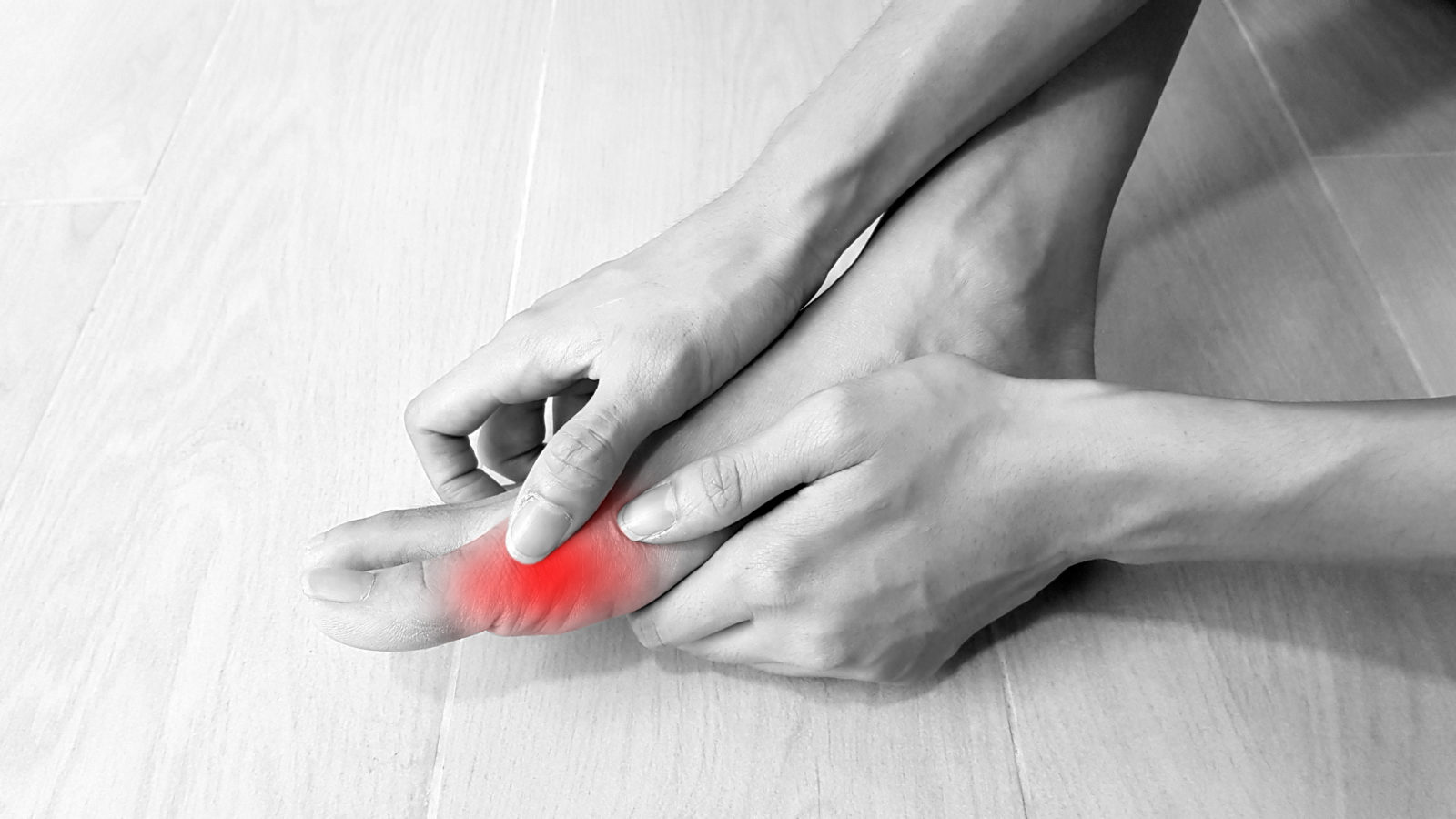Gout Is No Longer “The Disease of Kings”

Gout is a painful type of arthritis that most commonly affects the joints of the big toe, but might also affect the ankle, heel, knees, wrists, fingers, or elbow. Like other joint diseases, gout can be painful and disabling—yet people with this condition sometimes fail to seek treatment due to misinformation.
In previous eras, gout was considered a disease of rich people. The thinking was that only the wealthy could afford the rich foods, alcoholic beverages, and inactive lifestyles associated with the disease. Now we know that while diet, alcohol consumption, and inactivity can increase the risk of gout, genes play a larger part—yet for some gout sufferers, the stigma of overindulgence remains a barrier to seeking treatment.
Gout cases are on the rise, and not only because more people can afford to eat rich food. The American College of Rheumatology recently reported that from 1900 to present, cases of gout have increased worldwide, and the number is growing. “The increasing trend of gout burden is most likely to continue as the global aging population is on the rise,” said Australian study author Emma Smith, Ph.D., of The University of Sydney. “Attempts to lessen the disease onset and future burden of gout require better awareness, especially of risk factors, and early diagnosis and treatment.”
What causes gout?
Gout is caused when excess uric acid builds up in the bloodstream, caused by the breakdown of substances called purines, which are found in the tissues of our body and in some of the foods we eat. Normally, uric acid dissolves and passes out of the body. But if our bodies produce too much uric acid, or our kidneys don’t do a good enough job of getting rid of it, or if we eat too many foods that are high in purines, the uric acid can form needle-like crystals that are deposited in the joints. Our immune system reacts to these crystals as a threat, and the result is painful inflammation with swelling, redness, heat, stiffness—and by all accounts, a great deal of pain.
Recent research has focused on the genetic causes of gout. Gout runs in families; a person whose family members have it are more likely to also develop the condition. For example, certain enzyme defects can reduce the body’s ability to break down purines.
Though the causes of gout are more complicated than once thought, overindulgence in certain rich foods is still a factor. Said epidemiologist Dr. Hyon K. Choi from Massachusetts General Hospital, “Western lifestyle factors—including consumption of meats, fats, sugary sodas, and alcohol—and risk factors including obesity, hypertension and chronic kidney disease all contribute to the increased frequency of gout, which now affects more than 8 million in the U.S.”
Gout usually develops in middle age, but the risk increases with age. The longer we live, the more time gout has to develop. Some of the medications more commonly taken by seniors are known to increase the level of uric acid in the body.
How is gout diagnosed?
Gout can be tricky to diagnose because the symptoms can be vague and can mimic other diseases. Telltale signs include an attack of arthritis in only one joint, often the toe, ankle, or knee. The attack often develops quickly, and the joint is swollen, red, and warm.
To confirm the diagnosis, the doctor may order lab tests and imaging, or take a sample of fluid from an inflamed joint to look for the crystals associated with gout.
Treating gout and preventing another attack
Treatment is individualized for each patient, depending on their symptoms and the cause of their gout. The goals are to reduce pain, prevent future flares, and treat underlying conditions that contribute to gout.
Gout can be treated with medications, including drugs to relieve pain and swelling, and those that control the level of uric acid in the body. Research for new drugs is ongoing.
Lifestyle changes may also reduce recurrences of gout. These include:
- Having the doctor review all medications the patient takes.
- Making dietary changes as recommended by the doctor. Patients may be advised to avoid high-fructose corn syrup-sweetened foods, and foods that are high in purines, such as beer and other alcoholic beverages; red meats and organ meats; and seafood and shellfish. A diet rich in fruits, vegetables, and grains may be beneficial.
- Getting enough exercise and maintaining a healthy weight. An exercise plan can be individualized for the patient.
Older patients may find it especially challenging to manage gout. While the condition typically strikes a single joint at a time in younger patients, it may affect a number of joints simultaneously in older patients. It might be harder for an older adult to get enough exercise and manage medications. But, say experts, it’s worth the effort, because treatment can decrease the severity of attacks and reduce the risk of future attacks.
Dr. Choi reported that many cases of gout go untreated, even though it is “essentially curable”—which is a shame, because, he said, “Advanced gout can be quite debilitating, as it leads to joint destruction and deformity, and acute gout flares are one of the most painful conditions experienced by humans. The pathogenesis of gout is well understood and effective treatments are available, but the care of gout remains remarkably suboptimal due to a lack of proper patient education and treatment mismanagement.”
The information in this article is not meant to replace the advice of your healthcare provider. Report symptoms of gout promptly, and follow your doctor’s advice about treatment, exercise, and diet.
Source: IlluminAge AgeWise
![Health Concepts [logo]](https://healthconceptsltd.com/wp-content/themes/healthconcepts-corporate/images/logo.png)
